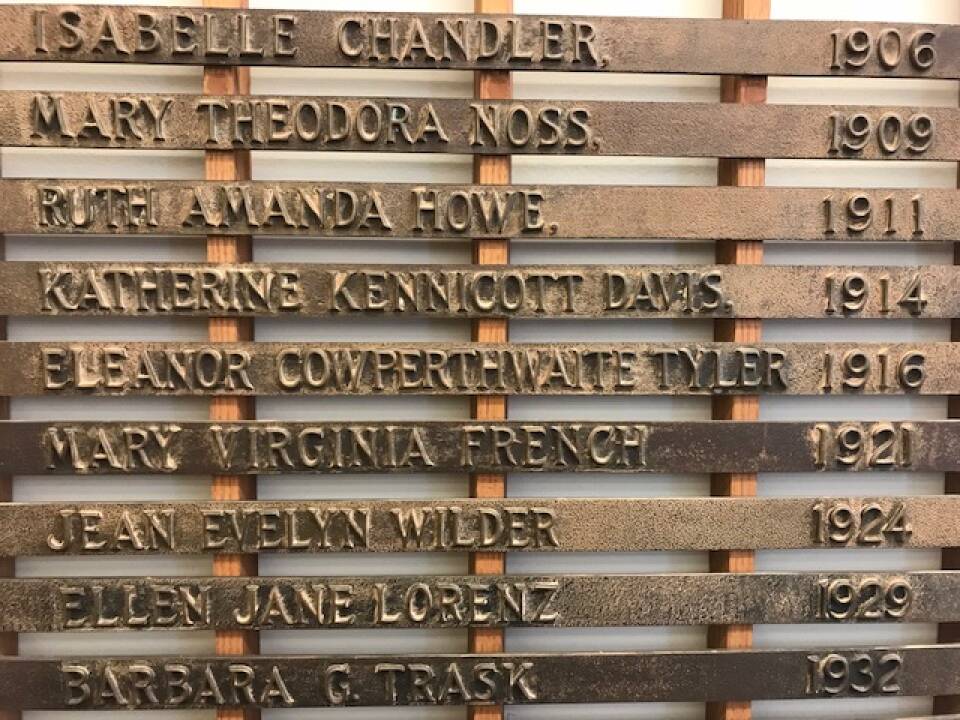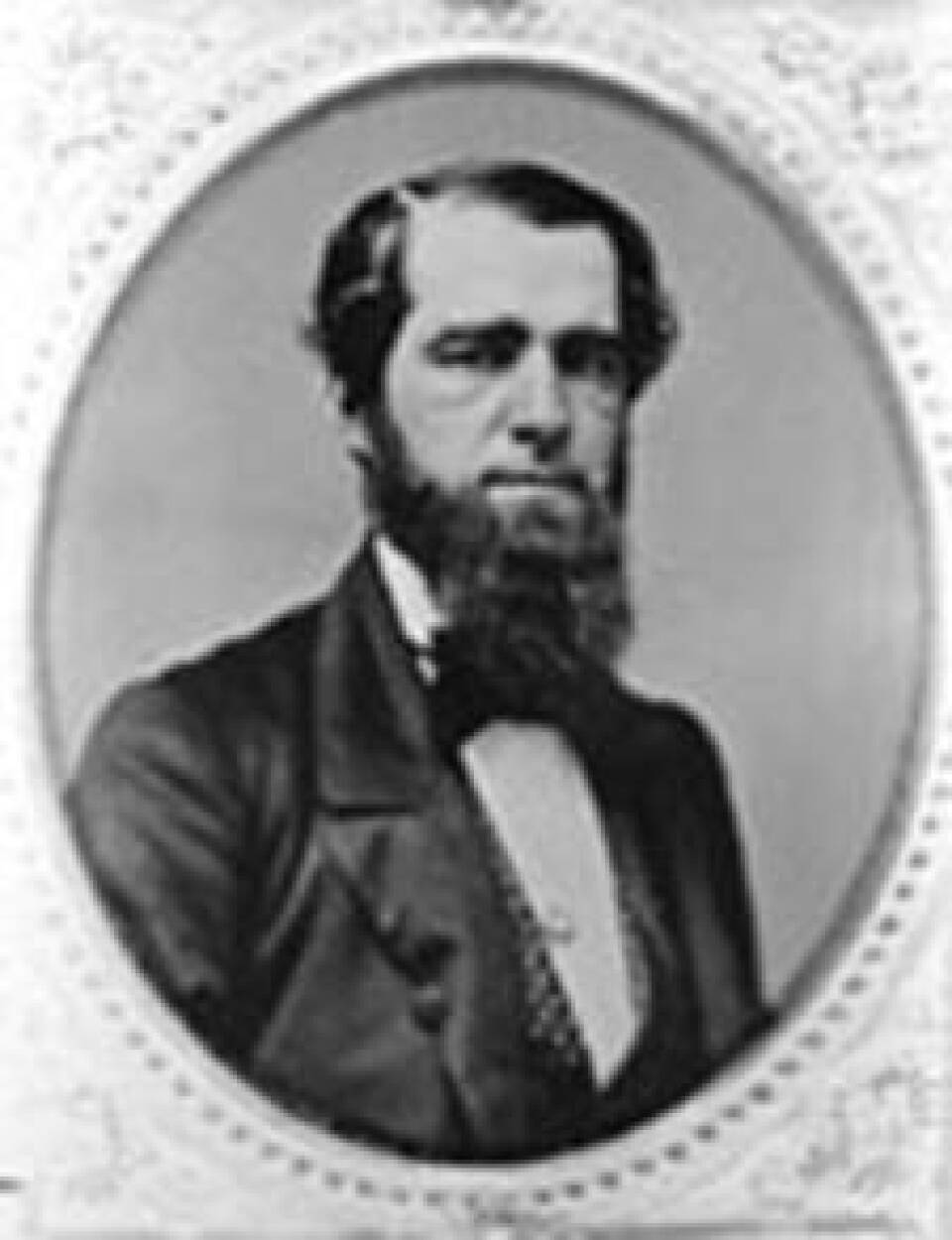There is much about the holiday season that seems timeless, inevitable; as if it simply always was. But Santa wasn’t a guy in a red suit until the 19th century. Chocolate chip cookies weren’t invented until the 20th century. And each of those ubiquitous Christmas carols currently dominating the airwaves was once written by someone. And it turns out, two of the most popular and enduring Christmas tunes were made in Massachusetts.
"THE LITTLE DRUMMER BOY"
Katherine K. Davis was born in Missouri, but it was as a student at Wellesley College in the 1900s that she would find her voice and begin to make her name.
"She was studying English Composition or English literature up until her sophomore year, and then in her junior year decided music was really it," said Claire Fontijn, chair of the music department at Wellesley College.
In 1914, the year Davis graduated from Wellesley, won the school’s Billings Prize for music.

"In that day it was a very distinguished prize and she talked about it her whole life and it took her a long way," said Fontijn.
How far? Davis would go on to study at New England Conservatory and in Paris with legendary composer and teacher Nadia Boulanger, who worked with Aaron Copland and Philip Glass, to name a few.
By the 1940s, Davis had settled in Concord, Massachusetts and was teaching and writing music.
"[One day], when she was trying to take a nap, she was obsessed with this song that came into her head and it was supposed to have been inspired by a French song, 'Patapan,'" explained Fontijn. "And then ‘patapan’ translated in her mind to 'pa-rum-pum-pum,' and it took on a rhythm."
The result was ‘Carol of the Drum’, a tune sung for years by amateur choirs before it was first professionally recorded in the early 1950s by the Trapp Family Singers — yes, the Sound of Music family — who had moved to New England during World War II.
But it was a 1958 recording by the Harry Simeone Chorale, who retitled it The Little Drummer Boy, that launched Davis’ song up the charts, and into the Christmas music canon.
Over the past six decades, "The Little Drummer Boy" has been recorded by more than 200 artists ranging from Rosemary Clooney to The Temptations, and recently, Justin Bieber featuring Busta Rhymes.
Davis would go on to compose some 600-plus works before her death in 1980. In her will, she left all royalties and proceeds from her music to the Wellesley College music department. Today, Fontijn says that money funds, among other things, free music lessons for non-music majors.
"They’re studying, let’s say neuroscience, this very heady thing, and they can play the piano or play the violin or sing and it gives them a real nourishment for the soul and for the body," she said.
"JINGLE BELLS"
"The Little Drummer Boy" is a tough act to beat, but how about another familiar carol: the third most recorded Christmas song in history (about 20,000 versions), according to FiveThirtyEight, the New York Times' stats blog. It’s appeared in more films — almost 400 — than any other Christmas tune. And it wasn’t even written as a Christmas song.
"No, I don’t think it becomes a Christmas carol really until the beginnings of the 20th Century," said Medford Historical Society’s Kyna Hamill, who’s a faculty member at Boston University and something of an expert on "Jingle Bells" composer, James Lord Pierpont. The Boston-born Pierpont was the son of a prominent minister and uncle to J.P. Morgan.

"He wasn’t perfect," said Hamill. "He abandoned his family. He’s not the best of men. He tried his hand at so many things and he struggled a lot."
For decades, "Jingle Bell"’s origins have been disputed. A plaque in the city of Medford claims Pierpont wrote it in a tavern there in 1850. Savannah, Georgia, the city where he was living for at least a time in the 1850s, claims it was written there. The dispute has become known as the Jingle Bell Wars.
"Every city has a claim or a stake to some person or some event or some moment and it’s very important for the identity of the town," said Hamill.
Still, Hamill has spent the last few years attempting to finally get to the bottom of the story.
"Did he sit and write it in a tavern in Medford? I don't know. I stopped asking that question. Did he do it in 1850? I don’t think so," said Hamill. "I’ve located him as having so many different professions and struggling for money all the time and he would not have sat on a song for seven years."
Hamill says seven years, because it was first published in September of 1857 as "One Horse Open Sleigh." And Hamill believes she’s found the playbill from the song’s first performance. It reveals a far more complex — even controversial — origin, as the song was featured that year in the season opening at Boston’s Ordway Hall, a theatre that specialized in blackface minstrel shows.
"Blackface minstrel music coming out of Ordway Hall in the mid-19th century was very middle-class entertainment," explained Hamill. "Families were allowed, children were allowed."
But however benign this form of entertainment may have seemed to white audiences, it was always offensive and problematic for African-Americans.
"The minstrel tradition is a very difficult history to consider because it was really stealing and lampooning a culture of people," said Hamill.
As Hamill has learned, sleigh songs like Pierpont’s were a dime a dozen in the minstrel halls.
"There’s nothing that original about it. Sleigh songs, as I’ve often said, are having a moment in the 1850s," she said. "I’ve tracked about 60 sleigh ride songs from that period."
So how did "Jingle Bells" emerge from the pack?
"That part of the story does elude me," she explained. "Why this particular song? I mean, having said that, it is a catchy song. It is a very catchy song."
What we do know is that song found its way into popular music anthologies and parlor books and emerged as the light, jaunty holiday tune we know today. But the earliest surviving recording of the song from 1898 gives us a sense of its roots, performed as part of a sketch by The Edison Male Quartette, playing stock characters popular in the minstrel tradition.
As for the next time you hear it on the radio, Hamill says its ok to enjoy it. Though maybe just take a moment to acknowledge the complexity of the American experience.
"I really don’t want to have people think that singing this song is a bad thing," she said. "There’s a legacy to a lot of minstrel songs. Steven Foster songs, Oh Susanna. But I think popular songs like this deserve as much attention as any other rigorous historical study."
Correction: An earlier version of this story incorrectly stated Katherine Davis wrote the lyrics to" America The Beautiful," which were written by another Wellesley alum, Katharine Lee Bates.





